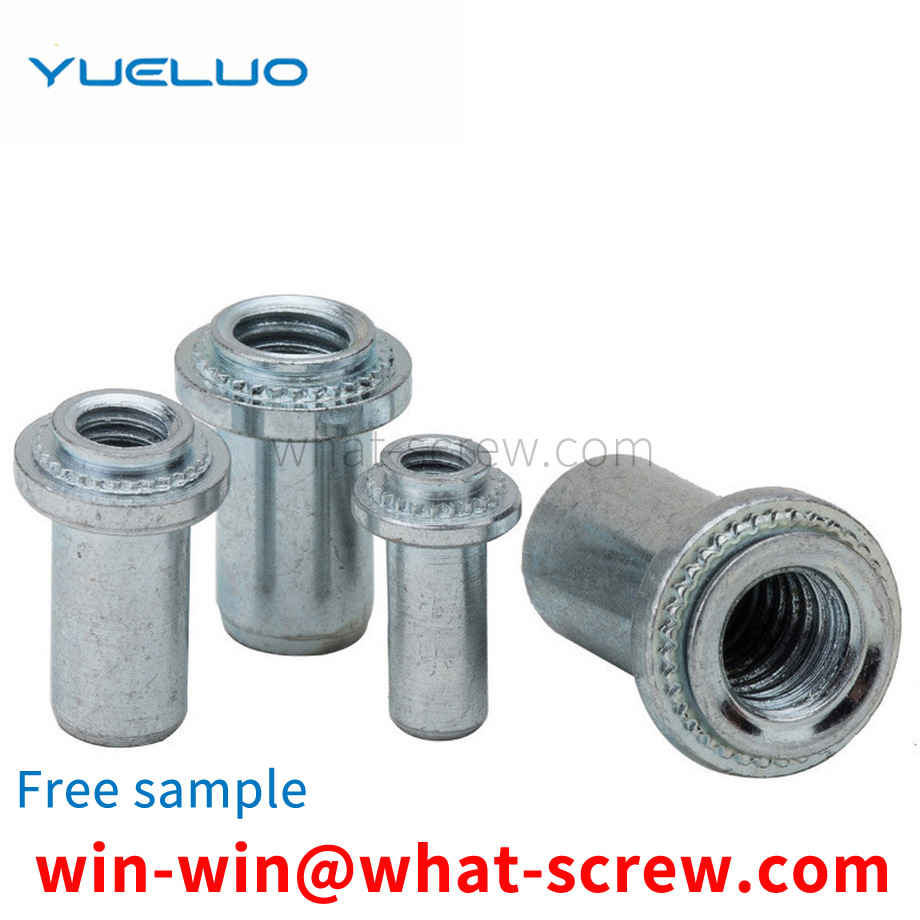GB6177 Hexagon Flange Nuts - Grade GB55 Hexagon Thick Nuts GB56 Hexagon Extra Thick Nuts GB1229 Large Hexagon Nuts (High Strength for Steel Structure) Lock Nuts Other Names: Root Nuts, Lock Nuts, and Nuts. Purpose: To lock the outer joint of the through wire or other pipe fittings. The working principle of the nut is to use the friction between the nut and the bolt for self-locking. However, the reliability of this self-locking is reduced under dynamic loads. In some important occasions, we will take some anti-loosening measures to ensure the reliability of the nut locking. Among them, the use of lock nuts is one of the anti-loosening measures.
In the prior art, the earliest rivets were small pegs made of wood or bone, and the earliest metal deformations were probably the ancestors of the rivets we know today. Without a doubt, they are the oldest known method of metal joining, dating back as far as the earliest use of malleable metals, for example: the Bronze Age Egyptians used rivets to attach six wooden sectors to the outer lines of a slotted wheel Riveted and fastened together. After the Greeks successfully cast large statues in bronze, they then used rivets to rive the parts together. With the progress of the times, there are more and more types of rivets, but traditional rivets have connection strength. Insufficient problem, so a new rivet is needed to solve the above problem.
Traditional rivet nuts are usually cylindrical, and special tools are required to complete the riveting operation between the workpiece and the sheet, and tools are completely required for locking. And in the actual production process, it is often encountered that there are square holes on the workpiece, and bolts need to be installed in the square holes, especially in the power cabinet and the control cabinet when the workpiece with prefabricated square holes is used as the main frame, due to Due to the special structure of the workpiece, the installation nut can only be inserted from the side, and the installation cannot be completed when the side installation space is limited, which brings inconvenience to the installation.
Therefore, in some cases, workers use a fixed torque wrench to control the tightening degree of the nut, but the fixed torque wrench is not convenient to use, and it needs to be checked frequently. At the same time, because the fixed torque wrench is not a conventional tool, its price is relatively high, which It also leads to its high procurement cost, and frequent verification also makes the later use cost also high.
nut is a nut, a part that is screwed together with a bolt or screw for fastening. A component that must be used in all production and manufacturing machinery is divided into carbon steel, stainless steel, non-ferrous metals (such as copper), etc. several types. Chinese name nut Foreign name Crewnut alias Nut properties and bolts or screws screw together to tighten the role of carbon steel, stainless steel, non-ferrous metal standard GB German standard international standard Japanese standard American standard features Steel, stainless steel, copper, alloy, etc.
We have many years of experience in the production and sales of screws, nuts, flat washers, etc. The main products are: 1.5 bolts, half-wire screws, flat head Phillips screws, small hexagonal flange bolts and other products, we can provide you with suitable fasteners for your solution Program.



















 Service Hotline
Service Hotline




